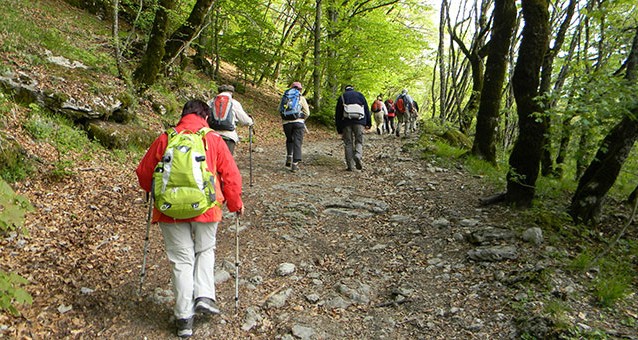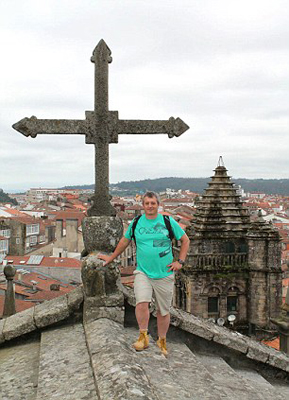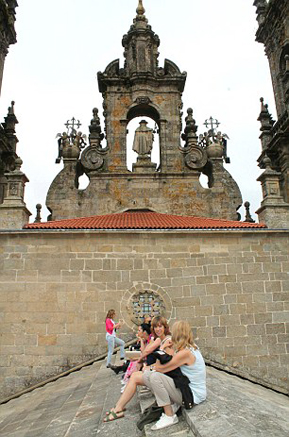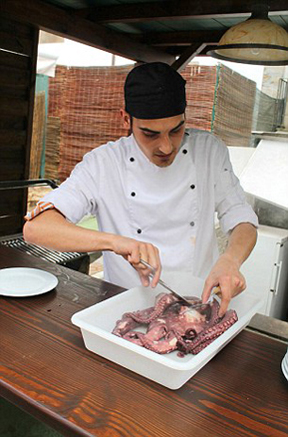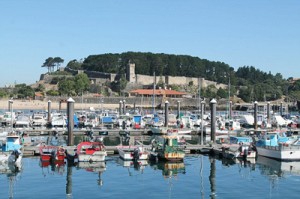Pilgrim’s progress: You don’t have to walk the Way to discover the lure of Santiago
By Mark Nicholls. Only the devout and the dedicated walk to Santiago de Compostela. The rest of us seem to fly in nowadays. One of the great pilgrimage centres of the Christian world – alongside Rome and Jerusalem – the route to Santiago has been a well-trodden path for more than a millennium.
Today it is as popular as ever with Catholic pilgrims and hikers as they seek the final resting place of St James, as well as the curious looking for a new city-break destination.

Recently, the city found itself the focus of global attention with the catastrophic train crash of July 24 which killed 79 people on the eve of the Festival of St James, the most important event in the city’s calendar.
The 2013 celebrations were cancelled as a result but the lure of St James remains.
For the thousands who every year follow the Way of St James on foot to Santiago, there is an outpouring of elation at completing their pilgrimage, though now coupled with thoughts for those affected by the rail tragedy.
That sense of achievement, after walking for up to a month, is palpable in the cathedral and the spot where the relics of the saint are said to have lain since the 9th century.
There are hugs, kisses, embraces and handshakes at the end of the service before the huge botafumeiro (smoke expeller in Galician) laden with billowing incense is set free. Weighing 54kgs, it hurtles across the cathedral transept like a rope-suspended missile, touching speeds of 60km an hour.
The more adventurous can clamber up 110 steps onto the roof at set times of the day for a city panorama; note the houses with large chimneys – apparently once an indicator of wealth in Santiago – and the Cross of Rags, which was originally set at the entrance to the city where pilgrims burned their clothes on arrival to stop spread of disease.
As is often the case with cathedrals, there is also a sense of mischief. Many have their obscene gargoyles but Santiago cathedral has its ‘bottom’. Yes, carved into one of the towers high up on the roof is an exposed rear. Tradition has it that the Archbishop of the day was slow in paying the stonemasons so, to poke fun at the cleric, they carved a stone bottom. The posterior is now enshrined in stone, for posterity.
Streets around Plaza do Obradoiro contain bars, shops and restaurants and the pilgrims’ office, where hikers are issued a certificate as proof of arrival in the city of St James (the patron saint of Spain). In medieval times the end of the pilgrimage was marked by the presentation of a scallop shell, which today is the symbol of the Way of St James.
Santiago de Compostela – from the Galician Sanctu Iacobu (Saint James) and the local Latin Composita Tella (burial ground) – is a UNESCO World Heritage City; a meeting place of Western faith, thinking and learning.
The city is focused on the Plaza do Obradoiro, bordered by the Cathedral, the City Hall, university vice-chancellor’s office and the 15th-century pilgrim’s hostel which today is the five-star Parador Hostal dos Reis Católicos.
The flagship of the government-owned Paradores hotel chain is a historical monument in its own right and the perfect place to stay to fully absorb the ambience of Santiago. It was built by Catholic monarchs Ferdinand and Isabella as a hospital for pilgrims, before being transformed into a hotel in the 1950s, retaining its cloistered courtyards, saintly statues and fountains filled with rose petals.
Nearby, the 18th-century Cathedral façade fronts a structure dating back beyond the 12th century and constructed on the site of an even older chapel.
The more adventurous can clamber up 110 steps onto the roof at set times of the day for a city panorama; note the houses with large chimneys – apparently once an indicator of wealth in Santiago – and the Cross of Rags, which was originally set at the entrance to the city where pilgrims burned their clothes on arrival to stop spread of disease.
As is often the case with cathedrals, there is also a sense of mischief. Many have their obscene gargoyles but Santiago cathedral has its ‘bottom’. Yes, carved into one of the towers high up on the roof is an exposed rear. Tradition has it that the Archbishop of the day was slow in paying the stonemasons so, to poke fun at the cleric, they carved a stone bottom. The posterior is now enshrined in stone, for posterity.
Streets around Plaza do Obradoiro contain bars, shops and restaurants and the pilgrims’ office, where hikers are issued a certificate as proof of arrival in the city of St James (the patron saint of Spain). In medieval times the end of the pilgrimage was marked by the presentation of a scallop shell, which today is the symbol of the Way of St James.
An hour’s drive from Santiago is the coastal town of Baiona just above the Portuguese border and dominated by the 16th-century fortress which is now the Parador Baiona hotel.
This area was the end of the known world for the Romans, who were early arrivals in northern Spain, yet it was also the first port in the Old World to learn of the discovery of the New World and America when one of Christopher Columbus’ returning caravels, La Pinta, anchored in the bay in April 1493.
Today, it is a pleasant harbour with beaches and inlets and the stepping off point for the islands of Cies. The 40-minute ferry crossing takes you to lovely beaches and walking routes across the island, where visitor numbers are carefully restricted to preserve the natural environment.
The region of Galicia, centred on Santiago de Compostela, continues to draw pilgrims in their droves but today it also attracts a new type of visitor, lured to this lush corner of northern Spain by its history, culture and laid-back charm.
*This article was originally published by Mail Online.
